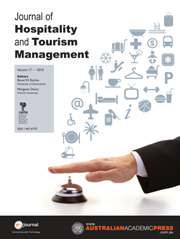Article contents
The Fragmentation of Markets, Neo-Tribes, Nostalgia, and the Culture of Celebrity: The Rise of Themed Cruises
Published online by Cambridge University Press: 23 February 2012
Abstract
Theming provides coherence, pleasure, and fantasy to the enjoyment of goods and services. Although social scientists and tourism researchers have studied built environments that are themed, the theming of activities and special events has not been examined in great detail. Themed activities and events are an integral dimension of themed cruises and underpin the provision of experiences that are coordinated and organised around a particular hobby, pastime, or specialised interest. This article identifies and analyses a series of factors that have contributed to the rise of themed cruises. These factors are the fragmentation of markets, the rising importance of neo-tribal affiliations, the heightened sense of nostalgic identification with past eras, and the popularity of celebrities. Themed cruises serve a particularly important purpose for the cruise industry because they are used as a way of attracting both first-time and repeat passengers. Business imperatives are ultimately behind the structured ‘thematisation' of consumption. The examples that complement the more theoretical components of the article were obtained from articles published in newspapers and travel-industry periodicals. A crucial notion addressed by this article is that the four factors responsible for the rise of themed cruises are interwoven and mutually reinforcing.
- Type
- Articles
- Information
- Copyright
- Copyright © Cambridge University Press 2011
- 30
- Cited by




